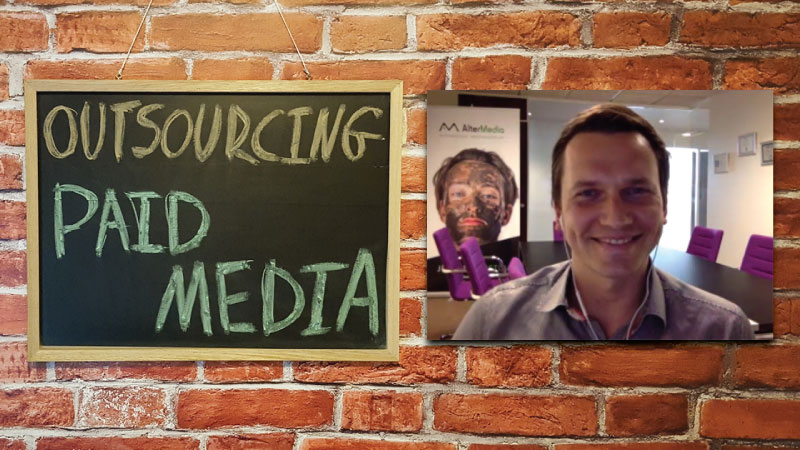
Client communication is one of the key critical aspects of Business
Altermedia is an Estonia-based agency (East Europe, South from Finland just across the Baltic Sea) that focuses on Paid Media. For those not acquainted with the concept meaning on-line paid advertising which in the specific case targets Facebook, Google, and Instagram.
The company both serves direct end clients as well as other agencies. In the direct clients’ case, the majority are small and medium size Europe and U.S based companies. Whereas agencies wise, one speaks about small agencies that do either not have or need to temporarily grow their delivery capacity.
Currently the company has active campaigns in around 15 countries which mean conveying the message in something like 8 different languages.
Armin points out that these are two different clients that pose different challenges as well as benefits; the agency requires some deliverables and acting as the “middleman” expects lower fees, but then again there is not effort in CRM (towards the end client), on the other hand directly dealing with an end client represents higher revenue and the chance of directly gathering client requirements, but it also represents an added CRM work effort. Bottom line, both are important and provide the chance of further developing business prospects.
Generally working through another agency, means no direct client interface at the beginning, until mutual trust is established.
How to make sure a 3rd party will gather assertive client requirements?
Altermedia has developed a focused questionnaire that enables the clarification of key client data and expectations:
- - Client Core Business
- - Target market
- - Budget
- - Goals
- - Strategic approach
- - Other …
And that is vital to assertively match client expectations and budget with available “tools”, so an effective campaign may be set in motion.
The approach is based on the “standard” sales cycle where one needs to accomplish target client awareness, followed by consideration and at the end a positive decision towards one’s offering. The “way to” depending on the goals: is it new markets, expansion, new portfolio, other.
The key point to success on a campaign is matching the corporate message with target client’s core expectations.
Which social media allows better ROI?
Armin starts by pointing out that Facebook and Google combined account for over 85% of online advertising cashflow, and from those some 75% pertain Google. Nevertheless, Facebook is growing faster than Google.
Google provides higher ROI in the advertising/ sales phase and Facebook on the brand awareness/ marketing phase.
Still, Armin makes a specific point in stating that one main component of Marketing and advertising is to constantly test the market for what is working better.
Currently Facebook is more affordable than Google, but the main point is that one should first test and only then seriously invest on what is working, never forgetting to continuously test.
Which client company profiles are not the best fit towards Paid Media?
Armin makes it very clear that above profiles, the main issue pertains having defined operational processes, for if a company does not have clear processes it is not efficient and while not being so, it is irrelevant the amount of marketing and advertising for it will not be able to stand up to what is being promised.
Another example is one of companies that sell very cheap products in low volumes, there is just no way for advertising or marketing to leverage sales in a manner that it will represent added profit or even ROI.
In these cases sometimes it may work if the client does it internally, which means reducing skipping the provider cost and therefore leveraging ROI potential.
How can a company evaluate a Paid Media provider?
To begin with any advertising or marketing agency needs to be actively willing to understand the client’s Core Business, key success factors, and goals/ expectations. If that is not the case, then it is certainly not and adequate choice. There is a wide range of “packaged” offering in the market, and that one needs to be careful with.
The other point is that Paid Media is just a component of advertising, so it is vital that the potential provider understands the overall concept of Marketing. SEO, Social Media and Inbound Marketing are complementary accessory initiatives that need to accompany Paid Media in order for a campaign to be successful.
Having good cooperation with clients usually means a 50% split between results and communication.
On the topic of starting a Paid Media consulting service, Armin starts by pointing out that it is vital to be open and willing to constantly learn and evolve. Understanding the basics and getting certifications from Facebook and Google is the absolute pillar.
Constantly doing projects and campaigns is also most relevant since the platforms as well as the market changes on a very frequent basis.
Video and mobile content is the current trend in effectively conveying marketing messages, with the advantage of being still cheap in terms of pay-per-view. Another thing that is working will are the landing pages on Facebook and Instagram when speaking of younger people.
Chatbots and messaging is also another strong massive trend in terms of usage which will certainly represent a marketing channel.
Split test, use two or three versions of the same message on the same media and check what works.